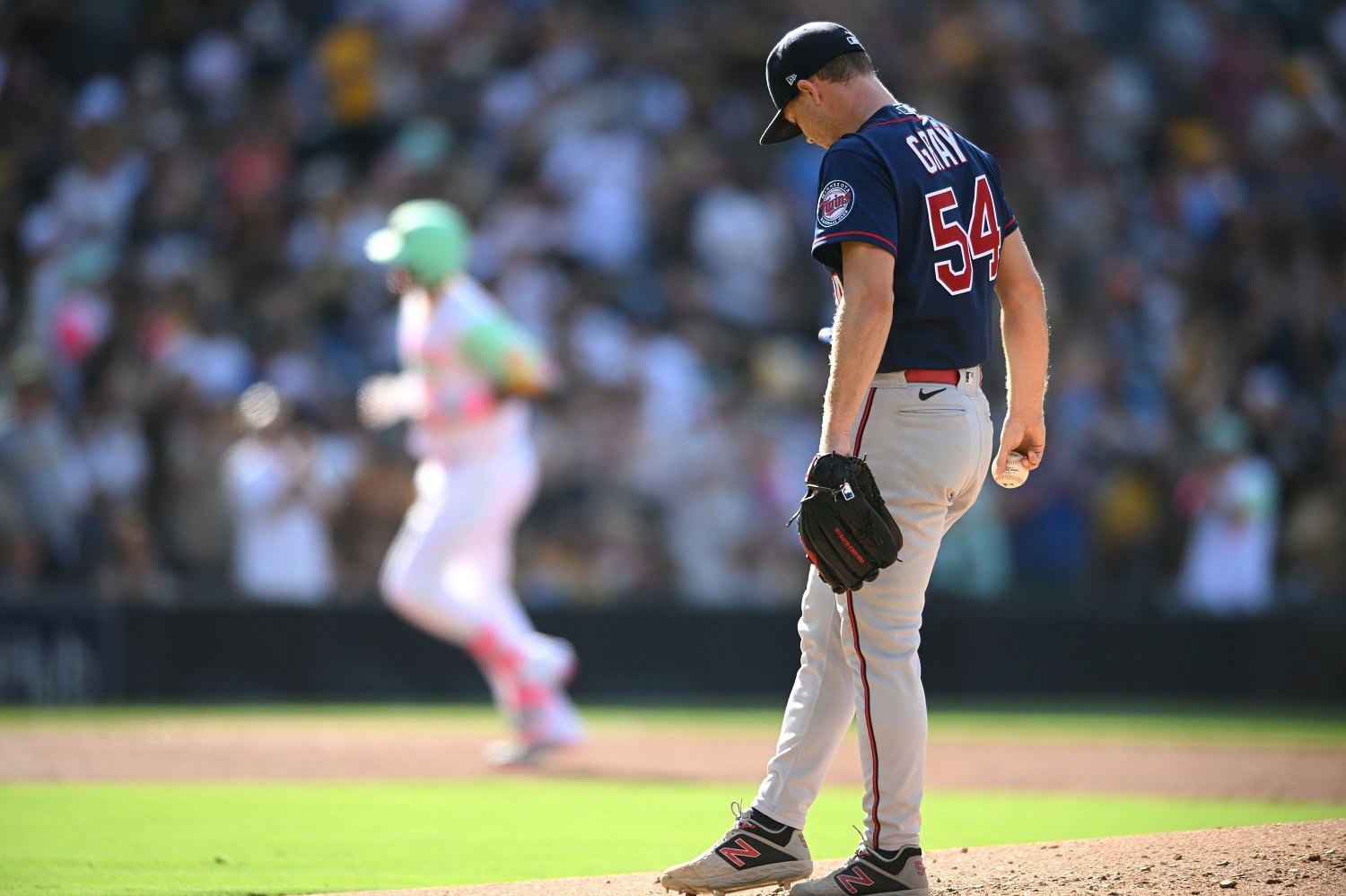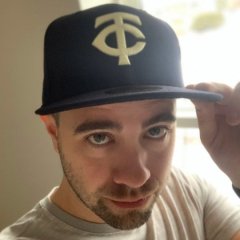Search the Community
Showing results for tags 'joe smith'.
-
By the time Ronny Henriquez debuted in 2022 many fans were likely already tuned out, which is fair. His late season appearance however shouldn’t be overlooked when it comes to the role he could play in 2023....
- 21 replies
-
- ronny henriquez
- joe smith
-
(and 2 more)
Tagged with:
-
Ronny Henriquez was acquired in the Mitch Garver deal and was seen as a middling starting pitching prospect. The ERA results weren’t there, but at 21 years old, Henriquez posted a 25%+ K rate at every stop in the minors. His generous listing at 5’10 raised questions about his ability to stand up to...
- 21 comments
-
- ronny henriquez
- joe smith
-
(and 2 more)
Tagged with:
-
Going into the 2023 Major League Baseball season the Minnesota Twins once again will need to address their bullpen. This past offseason the only acquisition of note was veteran Joe Smith and it took 34 games for them to cut bait. Maybe it makes sense to re-up with the lone free agent they acquired a...
- 9 replies
-
- michael fulmer
- jorge lopez
-
(and 2 more)
Tagged with:
-
After a disappointing 2021 season, the Twins needed to turn things around on the mound. Rocco Baldelli, Wes Johnson, and Pete Maki were cycling through arms left and right. Unfortunately, there wasn’t a substantial foot placed forward for them to do so in 2022. While Sonny Gray was acquired to bolst...
- 9 comments
-
- michael fulmer
- jorge lopez
-
(and 2 more)
Tagged with:
-
Coming off a 2021 Major League Baseball season that the Minnesota Twins would like to forget, there’s no denying that this version of the club has been much better. However, you’d be hard-pressed to find someone that didn’t expect more of this club, and while injuries have caused problems, there’s b...
- 33 replies
-
- gary sanchez
- emilio pagan
-
(and 3 more)
Tagged with:
-
Plenty of blame has been placed on Rocco Baldelli and the combination of Derek Flavey and Thad Levine. Some of that may be warranted, but the production, or lack thereof, falls on the shoulders of players. Whether through injury or ineffectiveness, Minnesota was certainly hoping to get more than the...
- 33 comments
-
- gary sanchez
- emilio pagan
-
(and 3 more)
Tagged with:
-
A handful of relievers have taken the blame for Minnesota's relief issues this season, but deeper issues compound the problem. Can the Twins solve their bullpen problems before the season's end? Fans focus on relief pitcher performance because of when those pitchers come into a game. In high l...
- 25 replies
-
- alex colome
- emilio pagan
-
(and 2 more)
Tagged with:
-
Fans focus on relief pitcher performance because of when those pitchers come into a game. In high leverage situations, each pitch has magnified importance on the game's outcome. Relievers also pitch a small number of innings per season, and a small sample size magnifies their flaws. Here are three b...
- 25 comments
-
- alex colome
- emilio pagan
-
(and 2 more)
Tagged with:
-
Minnesota’s front office filled multiple needs at the trade deadline, but the team is hardly perfect. So, what are the team’s most significant weaknesses? Baseball’s 162-game season is a long, grueling battle to divide the contenders from the pretenders. The AL Central is one of...
- 43 replies
-
- carlos correa
- tyler duffey
-
(and 2 more)
Tagged with:
-
Baseball’s 162-game season is a long, grueling battle to divide the contenders from the pretenders. The AL Central is one of baseball’s worst divisions this season, which helps the top teams stay in contention. Minnesota needs to solve the weaknesses below, or Chicago and Cleveland will claw their w...
- 43 comments
-
- carlos correa
- tyler duffey
-
(and 2 more)
Tagged with:
-
Entering the trade deadline period, Minnesota needed to address pitching in both the starting rotation and the bullpen. They also found themselves in the market for catching help, although that was more by circumstance rather than a reflection of their own decisions. No matter what way you look at i...
- 27 comments
-
- carlos correa
- joe smith
-
(and 2 more)
Tagged with:
-
Sometimes you fail to plan, which is not what the Minnesota Twins did this offseason. Sometimes you plan to fail, which certainly could be what the Minnesota Twins did this offseason. Entering the trade deadline period, Minnesota needed to address pitching in both the starting rotation and the...
- 27 replies
-
- carlos correa
- joe smith
-
(and 2 more)
Tagged with:
-
Brewers 7, Twins 6: Poor Pitching Dooms Twins to Drop Series Opener
Jamie Cameron posted an article in Twins
- 43 comments
-
- byron buxton
- gio urshela
-
(and 2 more)
Tagged with:
-
The Twins lost 7-6 to the Brewers on Tuesday. Despite an excellent fightback and a solid overall offensive performance, the Twins couldn't overcome a poor start from Dylan Bundy, and ran out of effective relivers at the end of the game. Box Score Starting Pitcher: Bundy 4.0 IP, 7 H, 5...
- 43 replies
-
- byron buxton
- gio urshela
-
(and 2 more)
Tagged with:
-
If you’ve paid even a second of attention to Twins fans lately, the dominant discussion point revolves around the bullpen’s lack of quality; the team needs extra, quality arms, and they need them now. This feeling is well-founded; it seems like every close loss involves a reliever screwing up late,...
- 9 comments
-
- jhoan duran
- tyler duffey
-
(and 3 more)
Tagged with:
-

The Twins Bullpen Is Bad, But Not Unfixable
Matt Braun posted a topic in Twins Daily Front Page News
The team has a solid foundation from which other additions can improve. If you’ve paid even a second of attention to Twins fans lately, the dominant discussion point revolves around the bullpen’s lack of quality; the team needs extra, quality arms, and they need them now. This feeling i...- 9 replies
-
- jhoan duran
- tyler duffey
-
(and 3 more)
Tagged with:
-
You all thought there were going to lose, didn't you? Box Score Starting Pitcher: Devin Smeltzer 6 IP, 3 H, 0 ER, 0 BB, 3 K Home Runs: Nick Gordon (2) Top 3 WPA: Devin Smeltzer (.359), Jhoan Duran (.188), Joe Smith (.094) Win Probability Chart (via FanGraphs) Devin Smeltzer...
- 49 replies
-
- devin smeltzer
- nick gordon
-
(and 3 more)
Tagged with:
-
In yet another inspired night by the offense, who had Byron Buxton homer twice, the Twins got a convincing win against the Rays to start the series. Devin Smeltzer had a quality start, despite not finishing it the way he wanted. Box Score Starting Pitcher: Devin Smeltzer, 6.0 IP, 4 H, 3 R,...
- 48 replies
-
- byron buxton
- carlos correa
-
(and 2 more)
Tagged with:
-

Twins 9, Rays 4: Buxton Homers Twice, Twins Offense Crushes The Rays
Thiéres Rabelo posted an article in Twins
- 48 comments
-
- byron buxton
- carlos correa
-
(and 2 more)
Tagged with:
-
The Twins are currently 4.5 games up on the Cleveland Guardians; the White Sox are stinky, and the Tigers and Royals remembered that they are, in fact, the Tigers and Royals. Every other team in the Twins' division is dreadfully below .500 and has little recourse for their sins. Given the AL Comedy...
- 21 comments
-
- jhoan duran
- joe ryan
-
(and 3 more)
Tagged with:
-
The esteemed Matthew brother, the one with the surname “Taylor,” decided to write about why people should not be worried about the Twins. In Fairness (™), we at Twinsdaily thought it would be fun to pull a Richard Nixon; reaping the benefits of reactionary negativity by presenting a counter-article...
- 21 replies
-
- jhoan duran
- joe ryan
-
(and 3 more)
Tagged with:
-
Monday's game against the Tigers offered ominous signs of potential things to come. Joe Smith, who allowed zero runs in his first 16 appearances of the season, has now allowed four runs in his past four. He couldn't dance his way out of a leadoff triple in the seventh at Detroit, letting two runs in...
-
Joe Ryan made the Friday night start for the Twins. Ryan struggled in his previous start, allowing a season-high five walks. Whether he was squeezed or just had a rough game, the rookie pitcher showed resilience and bounced back in this appearance. He and the offense left a fun mark on the night....
- 21 replies
-
- arraez
- gary sanchez
-
(and 3 more)
Tagged with:
-
Recent Articles
-
Recent Posts
-
3
Hey, look here
Whoooooooo Ranked ProspectsTurangChourioQueroFrelickBillWilburSpankyEdgarJohn NOOOOOOOOOO...
By Brock Beauchamp
Last post date -
0
Can Jorge López Rediscover His First-Half Success?
The Twins made a much-needed trade for an all-star reliever at last year’s deadline, but what they got fell short of e...
By Lou Hennessy
Last post date
-
Blog Entries
-
Who's Online (See full list)



























